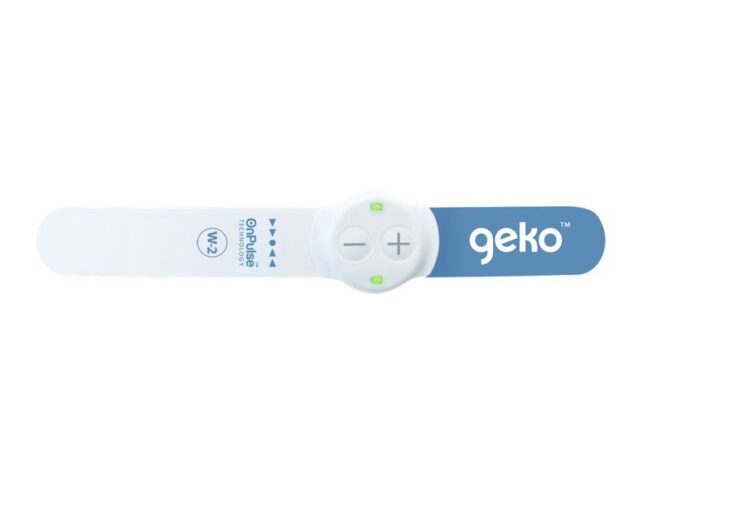The geko device is said to enhance blood flow in lower limb soft tissue for patients with venous insufficiency and/or ischemia

The geko device (Credit: PRNewsfoto/Sky Medical Technology Ltd.)
Sky Medical Technology has received US Food and Drug Administration (FDA) 510(k) approval for the geko device to treat patients with venous insufficiency/ischemia.
The geko device is indicated for enhancing the microcirculatory blood flow in lower limb soft tissue of patients with venous insufficiency and/or ischemia.
It is a non-invasive, easy to use, wearable therapy device, designed in the size of a wristwatch and is worn at the knee.
The disposable device works by gently stimulating the common peroneal nerve to activate the calf and foot muscle pumps, resulting in enhanced blood flow in the calf veins.
It operates without exerting external pressure on the leg, and provides complete mobility, said the company.
Sky Medical Technology CEO and Founder Bernard Ross said: “Achieving this latest 510(k) clearance is a significant milestone for Sky that will allow us to initiate a controlled market release of the geko device, to address venous insufficiency and ischemia in the first instance – a therapy area sorely in need of innovation.
“With this 510(k) and in partnership with leading US clinicians we can now press ahead to redefine the way vascular related conditions can be treated.”
According to the bio medical devices maker, geko device is the first electrical neuromuscular stimulator to receive FDA approval for improving microcirculatory blood flow.
The FDA approval adds to its prior clearances in edema reduction and for stimulation of the calf muscles to prevent venous thrombosis in both surgical and non-surgical patients.
Venous insufficiency and ischemia are characterised by reduced blood flow in the veins and arteries, and may lead to lower extremity oedema, skin changes, and discomfort.
In the three recently published clinical studies, geko device showed increase in microcirculatory blood flow in the lower limbs of venous insufficiency and ischemia patients.
The studies measured the improved blood flow using Laser Speckle Contrast Imaging, a non-invasive technique that measures blood flow.
Furthermore, the company is currently in the process of submitting further FDA 510(k) applications to expand its claims related to increased blood flow in venous insufficiency.
